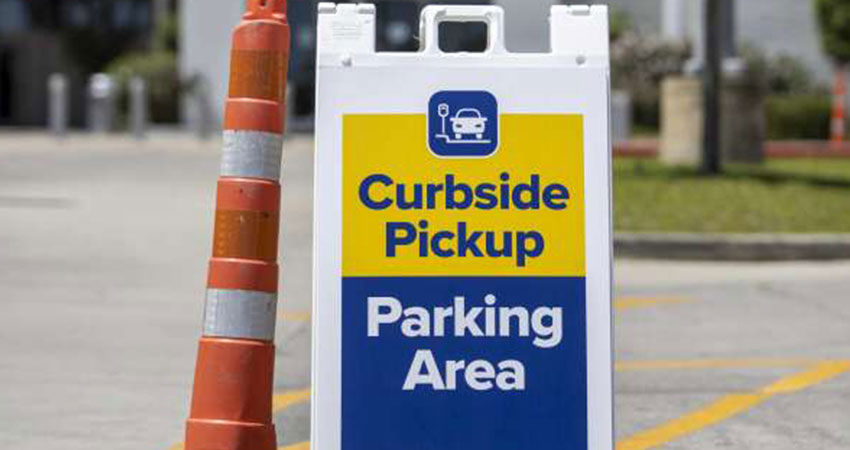As the country continues to battle COVID-19, many businesses are having to adapt at breakneck speeds or remain closed. In some states, they have been forced to close as being nonessential, and others are operating on skeleton crews. As states begin to shed light on how and when businesses can begin to reopen, businesses are thinking about how to make sales and support the customer.
Both ship from store and curbside pickup are not new to multichannel businesses. However, many smaller companies are trying to implement this model without necessarily having the infrastructure and systems to support it. We will outline what you need to do to set up streamlined, store-level picking and curbside fulfillment during the coronavirus pandemic. If you have closed temporarily, this may be a good way to reopen without customers in store.
Order Taking and Customer Service
Many small retailers don’t have the ability to take online orders. If you don’t, you’ll need to be efficient with phone orders. The difficulty is getting the customer to provide a specific SKU number. They’ll want to know if the item’s in stock, further complicating the process. Without being SKU specific, returns and exchanges will be higher than expected.
Here are considerations for order taking:
- Will you take orders via phone, email or website, or some combination?
- How will you check inventory availability? Store POS system?
- Will you limit card payments to phone or online to be contact free?
- Are you set up to pre-authorize credit cards and available funding? If you charge a card upfront without knowing availability, there will be more credits/refunds before pickup.
- Does your current system capture orders or is it manual? You need to capture the following:
- Date received
- Name, phone and email. Some companies want to capture the mailing address as well, for marketing purposes.
- Pick up name if not the customer. Retailers must decide if they will allow someone else to do so.
- SKU, part number, description, quantity, price.
- Credit card number, expiration date, CID number. It is critical to maintain strict PCI compliance. Writing down credit card information exposes this customer data and is a risk.
- If it’s a manual process, make sure to calculate sales tax appropriately through the POS, if you don’t have an ecommerce site.
Order Picking
Most retail companies will be picking one order at a time. This is slow but without pick functions, it’s the only way.
- What will you pick customer order from (i.e. pick ticket with SKU number, description and quantity)? Will this be generated from your POS or a handwritten document?
- Will you utilize a picking cart to handle multiple customer orders?
Order Staging
This needs to be set up so workers can quickly and easily pull them for customers awaiting curbside pickup.
- Do you have floor space for this?
- How will you bundle, bag or box orders?
- Will you utilize shelving or racking for staged orders?
- Identify customer orders with five digits of their last name
Returns, Credits and Exchanges
Customers will inadvertently order wrong items. You need to decide which returns and exchanges will be accepted, and how this is communicated to the customer. This must happen when the order is placed. Consider:
- What kinds of returns and exchanges will you accept?
- How will you clearly communicate this with customers?
- How will you clean and sanitize returns and exchanges?
- If inventory is not going to be resold, how will you dispose of returns and account for them?
Customer Communication
If you already have an ecommerce website, it provides many advantages for store pick and curbside pickup. Examples include store order entry; sales tax and address verification; validating SKU numbers and inventory availability; secure credit authorization; order status and customer notifications; item out-of-stock and order readiness for pickup.
Without this, you will need to acknowledge the order by providing a pickup time via text or email. How do customers notify you when they arrive? Can parking spots be designated for pickup? Customers can simply text or call when they arrive.
Adhere to CDC and Government Guidelines
We are not advocating violation of any directives from local, state and federal health and safety agencies related to the COVID-19 crisis. First and foremost, your priority should be employee and customer safety. The CDC and OSHA lay out clear procedures for COVID-19 operations. Here is one from the CDC on disinfecting your facility.
Summary
Store picking and curbside pickup service will help you stay in business or restart during the coronavirus pandemic, but there’s no one-size-fits-all solution. Thinking through these questions will help you streamline the process. We know businesses are creative and will do what it takes to keep the doors open. It is our prayer that your employees and families stay safe and your business thrives after this disruptive season is past.
Brian Barry is President of F. Curtis Barry & Co.

